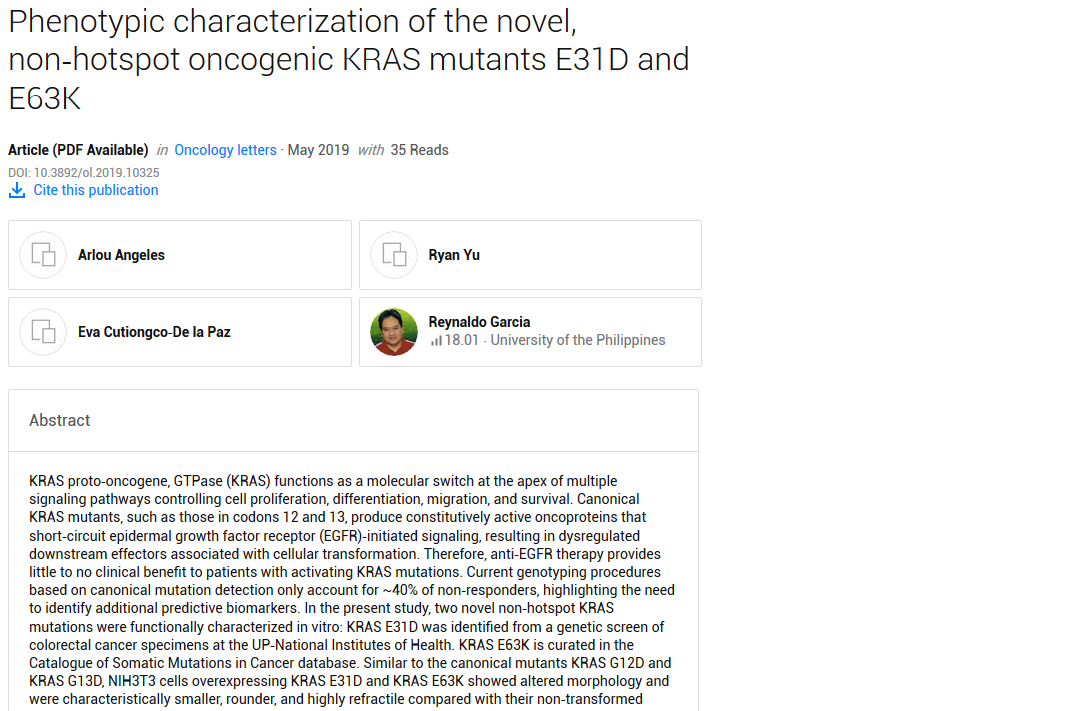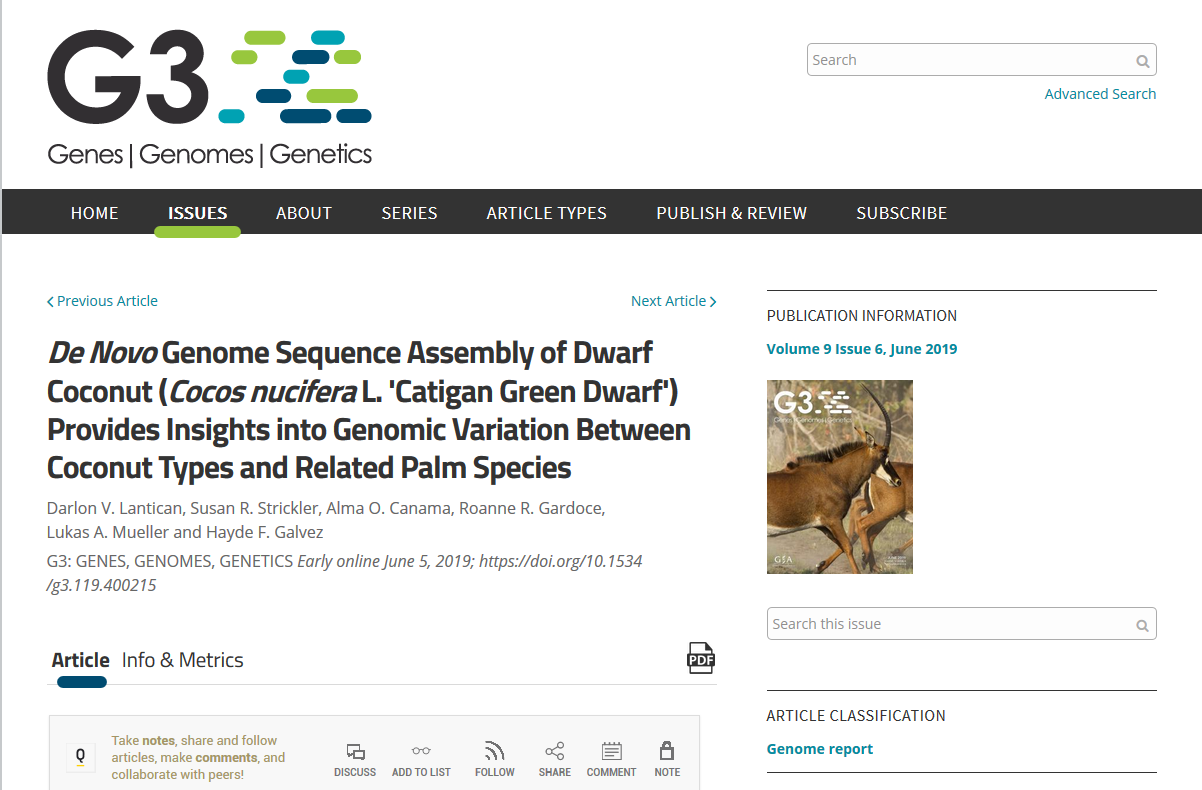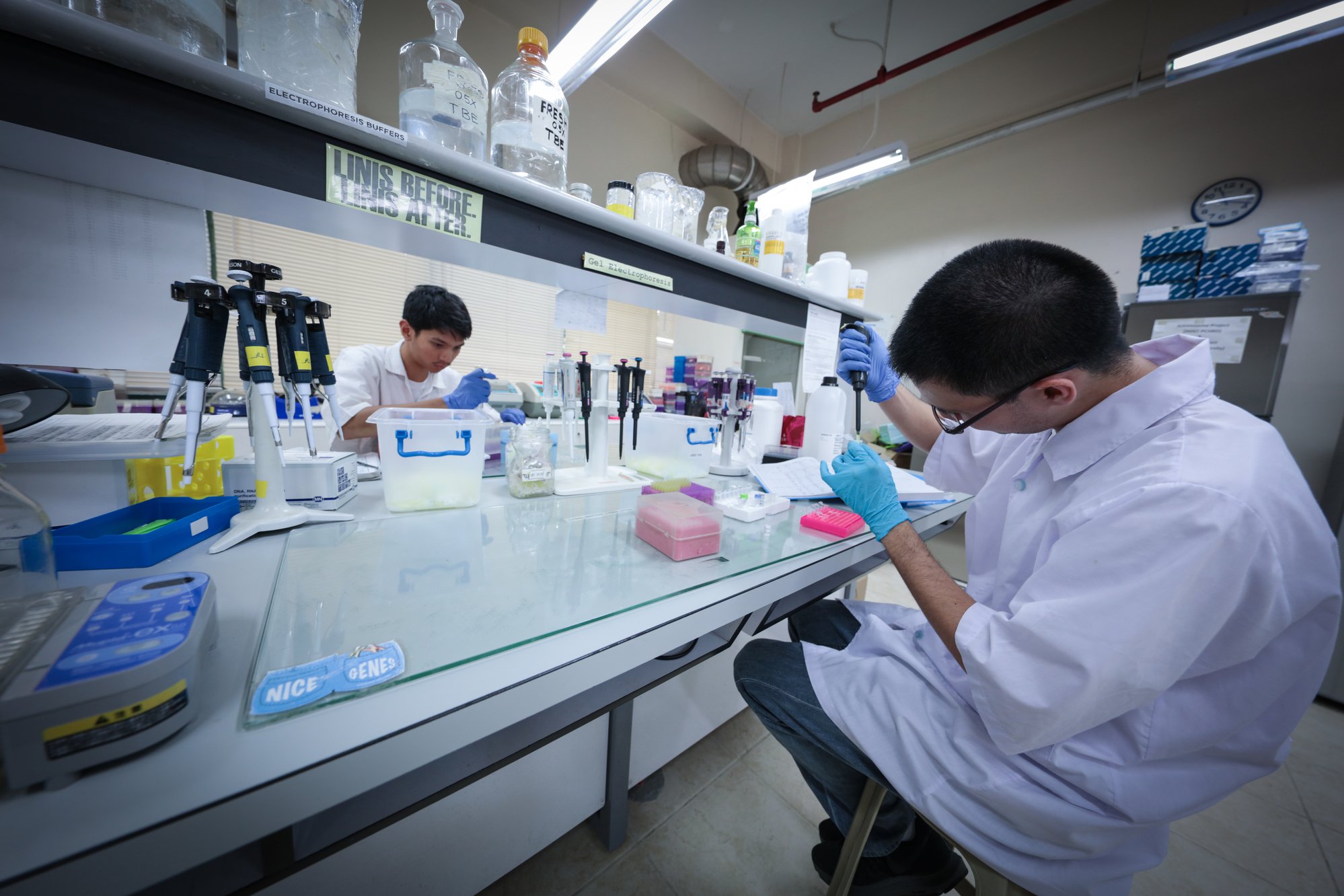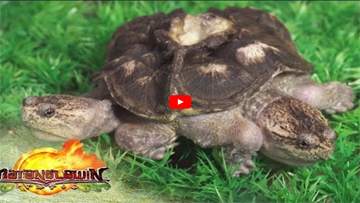Dr. Cynthia Saloma during an episode of the TV program, Matanglawin last June 23, 2019 elaborates the rationale behind polycephaly (condition of having more than one head) in animals like the snapping turtle.

Phenotypic characterization of the novel, non‑hotspot oncogenic KRAS mutants E31D and E63K
KRAS proto‑oncogene, GTPase (KRAS) functions as a molecular switch at the apex of multiple signaling pathways controlling cell proliferation, differentiation, migration, and survival. Canonical KRAS mutants, such as those in codons 12 and 13, produce constitutively active oncoproteins that short‑circuit epidermal growth factor receptor (EGFR)‑initiated signaling, resulting in dysregulated downstream effectors associated with cellular transformation.

De Novo Genome Sequence Assembly of Dwarf Coconut (Cocos nucifera L. ‘Catigan Green Dwarf’) Provides Insights into Genomic Variation Between Coconut Types and Related Palm Species
A total of 34,958 high-confidence gene models were predicted and functionally associated to various economically important traits, such as pest/disease resistance, drought tolerance, coconut oil biosynthesis, and putative transcription factors.

Using DNA barcodes against the wildlife black market
While recent news of giant clams (Tridacna gigas) being harvested in the disputed Scarborough Shoal drew massive outrage online, it was only the latest low point in the dark history of wildlife exploitation in the region. A poignant series of cases also happened here in 2013 and 2014, this time involving pangolins or “scaly anteaters,” which have been described as the most trafficked animals in the world.

